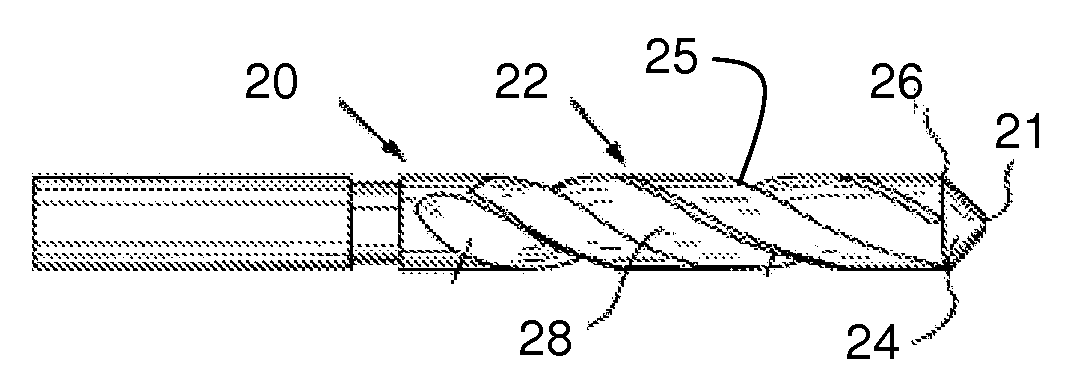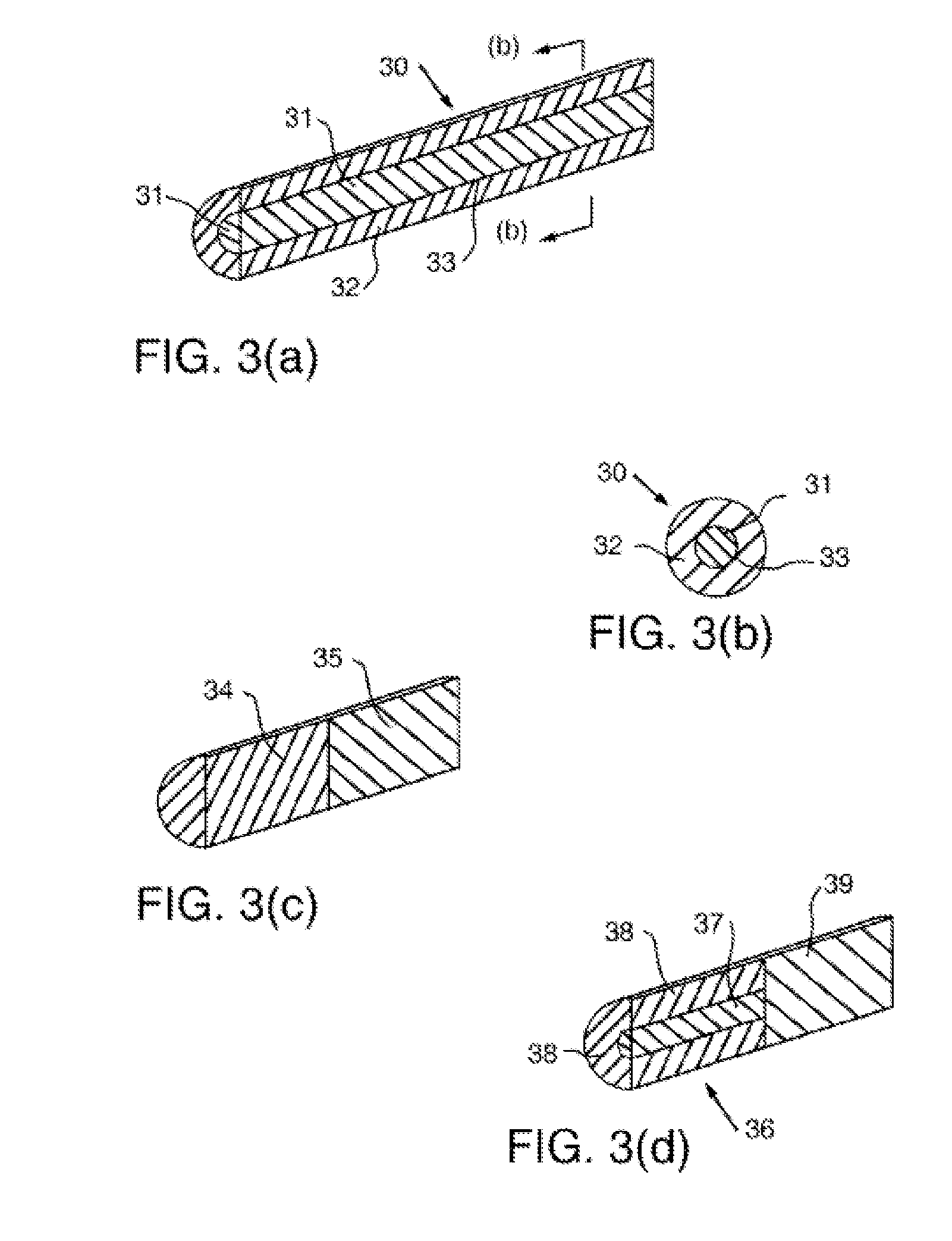Composite cemented carbide rotary cutting tools and rotary cutting tool blanks
a technology of cemented carbide and rotary cutting tools, which is applied in the direction of shaping cutters, manufacturing tools, twist drills, etc., can solve the problems of reducing the service life of rotary cutting tools
- Summary
- Abstract
- Description
- Claims
- Application Information
AI Technical Summary
Benefits of technology
Problems solved by technology
Method used
Image
Examples
example 1
[0091]FIG. 7 is a micrograph of a region 60 of a rotary tool blank comprising a hybrid cemented carbide including cubic carbide according to the present disclosure. The region depicted in FIG. 7 comprises a hybrid cemented carbide grade including 20 percent by volume of Firth Grade T-04 cemented carbide as the dispersed phase 62. Firth Grade T-04 cemented carbide comprises 6% by weight of a solid solution of the cubic carbides TiC, TaC, and NbC, 82% by weight of WC, and 12% by weight Co. The continuous phase 64 of the hybrid cemented carbide region of the rotary cutting tool blank shown in FIG. 7 comprises 80 percent by volume of Firth Grade 248 cemented carbide. Firth Grade 248 cemented carbide comprises 89% by weight of WC and 11% by weight of Co. The measured contiguity ratio of the dispersed phase 62 is 0.26 and, thus, is less than 0.48. All cemented carbide powders were obtained from ATI Firth Sterling, Madison, Ala.
example 2
[0092]The hybrid cemented carbide region 60 of the rotary tool blank depicted in FIG. 7 of Example 1 was prepared by presintering the Firth Grade T-04 cemented carbide granules (or powder) at a temperature of 800° C. in a vacuum. The presintered Firth Grade T-04 cemented carbide granules comprise the dispersed phase 62 of the hybrid cemented carbide region depicted in FIG. 7. The presintered granules were blended with green granules of Firth Grade 248 to form a hybrid cemented carbide blend. The hybrid cemented carbide blend was placed in a void in a mold and compacted at a pressure of 137.9 MPa (20,000 psi) by mechanical pressing. It is understood that isostatic pressing can be used for the same result. The hybrid cemented carbide compact was over-pressure sintered in a sinter hot isostatic pressing (sinter-HIP) furnace at 1400° C.
example 3
[0093]A region 70 of a tool blank comprising a hybrid cemented carbide comprising cubic carbide according to the present disclosure is seen in the micrograph of FIG. 8. The hybrid cemented carbide shown in FIG. 8 includes 20 percent by volume ATI Firth Sterling Grade 248 cemented carbide as the dispersed phase 72 and 80 percent by volume ATI Firth Sterling Grade T-04 cemented carbide (with 6% by weight cubic carbide) as the continuous phase 74. The contiguity ratio of the dispersed phase is 0.40. The hybrid cemented carbide region of the tool blank was prepared using a process and conditions similar to Example 2.
PUM
| Property | Measurement | Unit |
|---|---|---|
| Temperature | aaaaa | aaaaa |
| Temperature | aaaaa | aaaaa |
| Temperature | aaaaa | aaaaa |
Abstract
Description
Claims
Application Information
 Login to View More
Login to View More - R&D
- Intellectual Property
- Life Sciences
- Materials
- Tech Scout
- Unparalleled Data Quality
- Higher Quality Content
- 60% Fewer Hallucinations
Browse by: Latest US Patents, China's latest patents, Technical Efficacy Thesaurus, Application Domain, Technology Topic, Popular Technical Reports.
© 2025 PatSnap. All rights reserved.Legal|Privacy policy|Modern Slavery Act Transparency Statement|Sitemap|About US| Contact US: help@patsnap.com



